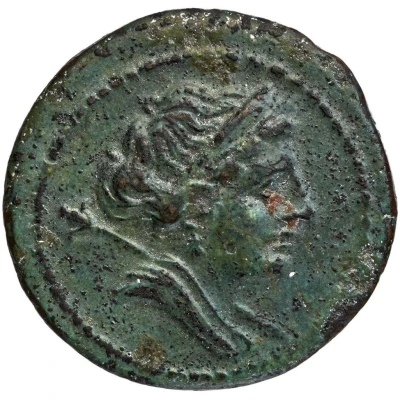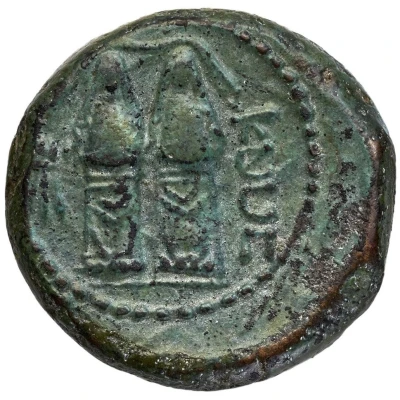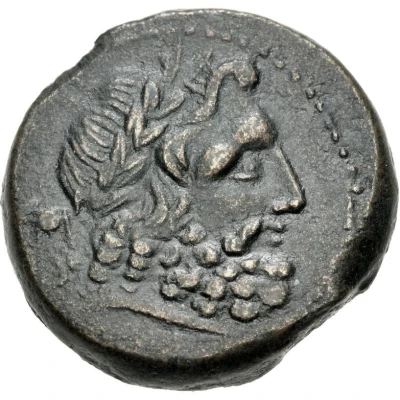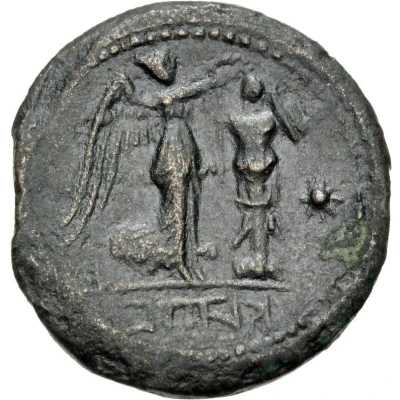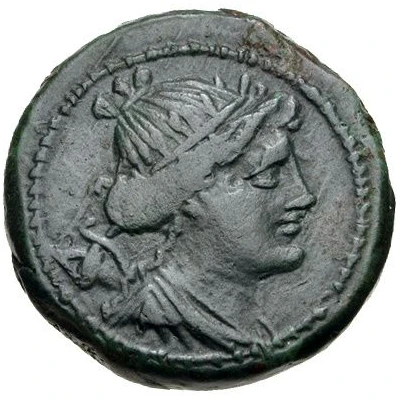
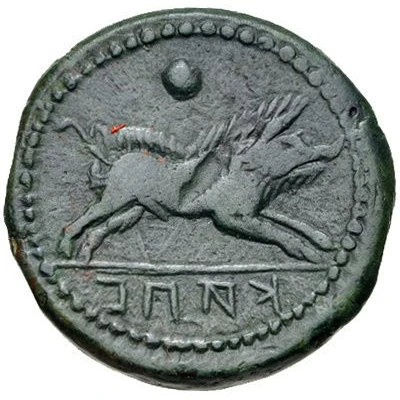

© Classical Numismatic Group, Inc.
Uncia 216 BC - 214 BC
| Bronze | 7.09 g | 20 mm |
| Issuer | Capua (Campania) |
|---|---|
| Period | Second Punic War (218 BC - 203 BC) |
| Type | Standard circulation coin |
| Years | 216 BC - 214 BC |
| Value | Uncia (0.1) |
| Currency | As (circa 216-211 BC) |
| Composition | Bronze |
| Weight | 7.09 g |
| Diameter | 20 mm |
| Shape | Round (irregular) |
| Technique | Hammered |
| Orientation | Variable alignment ↺ |
| Demonetized | Yes |
| Updated | 2024-10-10 |
| Numista | N#427970 |
|---|---|
| Rarity index | 100% |
Reverse
Boar standing right; pellet (mark of value) above; in exergue, kapu.
Script: Old Italics
Translation: kapu
Comment
BMC Italy pg. 81, 3-4; Laffaille -; Campana, Monete, em. 19, fig. 15; Giard, Monnaie 14.
Interesting fact
The Uncia coin was used as a form of currency in the ancient Roman city of Capua, which was located in the Campania region of Italy. Despite its small weight of 7.09 grams, the Uncia was an important denomination in the Roman monetary system and was used for everyday transactions. Its design featured the image of a bull, which was a symbol of strength and prosperity in ancient Roman culture. The Uncia coin was also unique in that it was made of bronze, a metal that was widely used in ancient Rome for coins and other objects. Overall, the Uncia coin is a fascinating piece of history that provides insight into the economic and cultural practices of ancient Rome.
Price
| Date | Mintage | VG | F | VF | XF | AU | UNC |
|---|---|---|---|---|---|---|---|
| ND (216 BC - 214 BC) | - | - | - | - | - | - |
Values in the table are based on evaluations by sales realized on Internet platforms. They serve as an indication only for Uncia (216 BC - 214 BC) coin.
